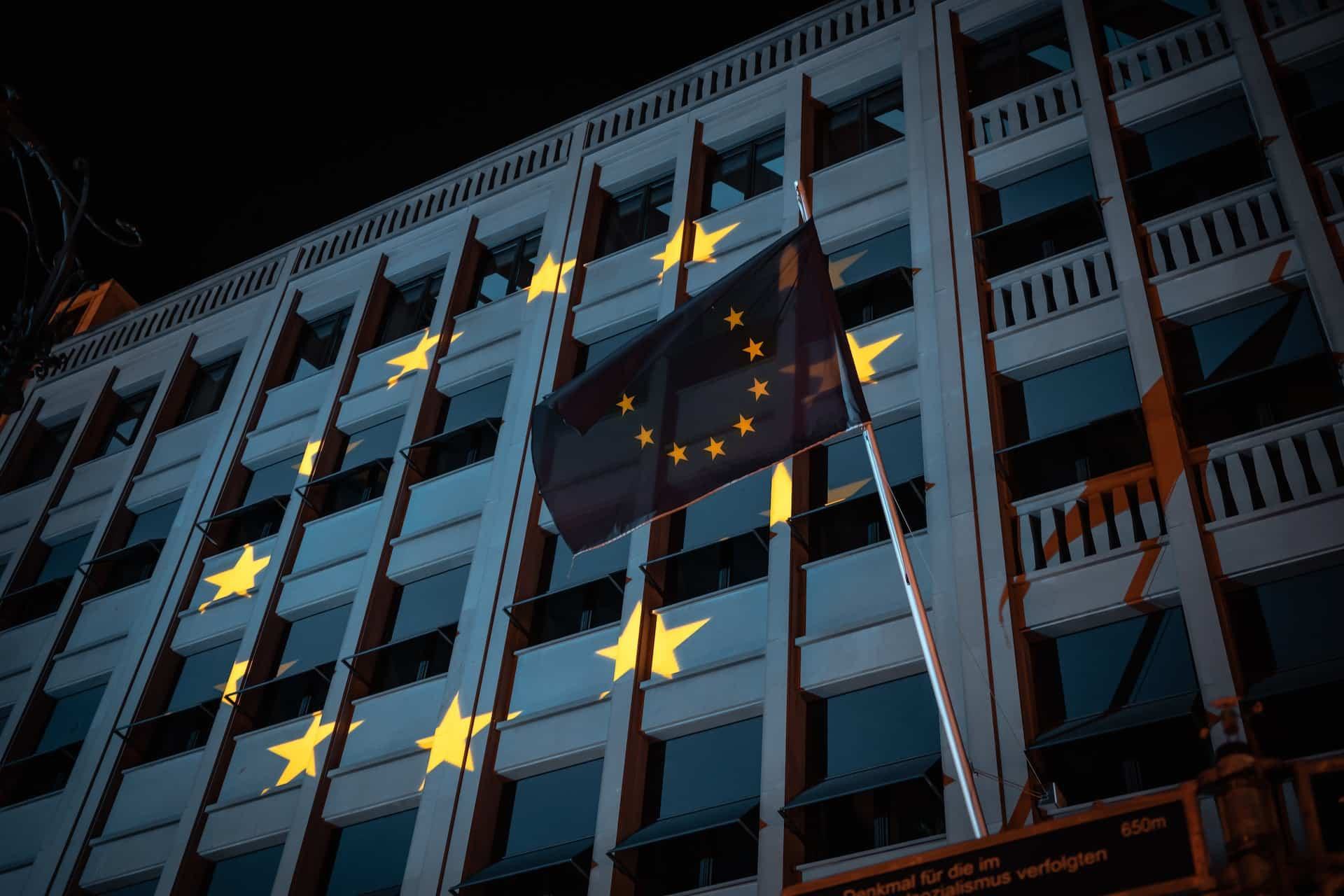
While many businesses are conscious of their operational impact on the environment, the collective impact of supply chains on greenhouse gas emissions is becoming clearer — with eight supply chains responsible for more than half of all global emissions. Baker Tilly experts look at how this shift in thinking could disrupt global trade.
The global goal of net-zero targets by 2050 will require changes that will disrupt every country and industry — and investors are increasingly demanding action, even on emissions that are not under their direct control.
Take ExxonMobil, the oil and gas giant, for example.
In January, it reported its so-called Scope 1 and Scope 2 emissions were the lowest since at least 2010. These emissions, directly generated by the company (Scope 1) and generated by the energy used by the company (Scope 2) have been the subject of significant efforts by the company.
But it also succumbed to investor pressure to disclose its Scope 3 emissions – all indirect emissions created by the company’s activities, from the airmiles clocked by executives, to the energy used by products it has sold, to the costs associated with transporting goods.
When one of your major products is fuel, that is confronting. ExxonMobil revealed its Scope 3 emissions from petroleum product sales in 2019 were equivalent to 730 million metric tonnes of CO2 – more than six times its Scope 1 and 2 emissions put together.
That demand by investors is a sign of growing awareness that direct emissions don’t tell the full environmental story of a company, particularly when it comes to supply chains.
Supply chain emissions are, on average, 11.4 times higher than operational emissions. For office-based companies, it is usually their largest share of the carbon footprint, covering emissions associated with business travel, procurement, waste and water.
And with a growing number of multinationals now agreeing to set and report on emissions targets, the pressure on other corporates to review their footprint will only grow.
Rachel Nutt, Renewable & Sustainable Energy Sector Head at MHA MacIntyre Hudson, says large corporates are now starting to ask questions of their suppliers.
“One of my big clients is a food processor, they supply Marks and Spencers, one of the top end supermarket chains here,” she says.
“They are really bothered what they’re doing from a green agenda, so I suspect there’s a bit of peer pressure that is starting to come into play.”
Preparing for a lower emissions future
Most companies won’t produce emissions on the same scale as an oil and gas giant but examination of a sustainable supply chain can no longer be ignored – from an investment as well as an environmental angle.
Between 1995 and 2015, Scope 3 emissions grew by 84 per cent and investors are putting more pressure on corporate boards to improve their environmental, social and governance (ESG) credentials.
It is estimated that eight supply chains together account for more than half of the world’s emissions, and within these supply chains it is often a handful of dominant companies that are most represented.
Food, construction, fashion, fast-moving consumer goods, electronics, automotive, professional services and freight account are all under additional scrutiny as high emissions producers.
And just as investors have divested from some resources companies who have not kept pace with the demand for sustainable investment, it is likely that other sectors will similarly be punished by investors if they are not seen to act.
“Large corporates are not just cracking down on supply chain emissions because of a regulatory requirement, it’s being demanded.”
Globally, the value of sustainable investment funds has risen to a fresh high of nearly $2 trillion making it a powerful catalyst for corporates to change — and Ms Nutt says companies need to get on the offensive before shareholder pressure bears down.
“In the UK, we’re trying to get companies on the front foot and think, what market are they in and who are their customers?” she says.
“We have many deadlines to meet if to be carbon neutral by 2050 and business leaders need to start thinking about what they are doing.”
Guy Hodgkinson, Partner and renewable energy specialist at MHA Macintyre Hudson, says it’s not a stricter regulatory environment that is driving these examinations.
“It has become important to get across in the strategic report what companies are actually doing to improve greenhouse gas emissions, from the start of the supply chain all the way through to the buyer,” he says.
“Large corporates are not just cracking down on supply chain emissions because of a regulatory requirement, it’s being demanded. In the end, consumers want to see that its operations are sustainable.”
Getting close to your suppliers
Measuring data has become second nature to most business, allowing them to plot profiles of customers, track strengths and weaknesses, and identify opportunities and risks.
Yet when it comes to corporate social responsibility or environmental strategy, companies have little idea about whether they are influencing anything, says Arnaud Bergero, the Director of Operations at Goodwill-management, a subsidiary of Baker Tilly Strego in France.
“People need to measure the impact of their policies and for now, there is a lack of measure of environmental impact,” he says.
“Feel good projects are put in place but they don’t know the real impact of those projects or the true position that they start from.
“The starting point must be to measure. Most companies want to be environmentally responsible, but they haven’t measured their impact, so they don’t know.
“If we take supply chain emissions, companies don’t know what their carbon footprint is in their supply chain.
“They may wish to reduce it but when you don’t know where you start from, you cannot put in place the appropriate projects.”
One of Mr Bergero’s clients, a pharmaceutical company, is started to realise the magnitude — and complexity — of tracking its supply chain emissions.
“The drugs they are manufacturing, they are made abroad so in France, they just have a distribution company, so they are more like a service,” he says.
“Most of their footprint is limited to two areas. The first is the cars that their employees use, this accounts for almost 90 per cent of their Scope 1 and Scope 2 footprint. This is people driving around, going to the hospital or going to meet a doctor to present the product.
“They are working on this part by replacing the cars of the employees to hybrid cars and electric cars, they are building towards replacing most of their fleet.
“But it’s a complex equation because if you want to have an impact, you have to pick the vehicles that best fits the use of your employees.
“The second part, which they haven’t measured yet, is the distribution of the drugs themselves all over the country. Up until now, this was hidden behind their subcontractors but now they understand that they have some strength in the negotiation.
“The idea is to ask their distributors what their impact is, such as how many kilometres are completed in one day and what is the fuel feed rate of the trucks. if you deliver one pack of medicine in a 40-tonne truck, it’s not very efficient when it comes to environmental impact.
“They don’t have access to how the rounds are organised, are they optimised in terms of kilometres and those sorts of things. So, they have to get closer to their suppliers to have access to such information.”
Green energy innovation
Ms Nutt says many large corporates lack the appetite to seek green solutions for their energy needs because they don’t know where to look for sustainable solutions, or they are not financially confident to harbour the risk themselves, particularly if they are heavy power users.
But innovation and partnerships are the key to unlocking sustainable supply solutions.
“Large scale power users, even in a larger corporate, they haven’t got the management skill in house or know where to look for sustainable energy solutions,” she says.
“There are so many pension funds would love a tenant who’s going to generate renewable energy on a site next door to the power user.”
“We’re saying to them, we’ve got a consulting arm that we know that we can do some joint projects with, so we can introduce them.
“There are so many pension funds would love a tenant who’s going to generate renewable energy on a site next door to the power user.
“Structuring a plant that’s rented off a pension scheme site, that sits there as a power generator, leaves them with a deal for discounted power that they know is coming from a green supply.
“Our partners have done large-scale deals where they’ve got a tripartite agreement between the pension scheme, the power generator, and the user.
“They can often achieve something, it gives them security of supply and a big green tick, without having to go and do it themselves.
“There will be more opportunities like that, because no one in the large corporate wants to mess it up and they need someone like us to say, I can show you the people that know how to do this, let’s bring it bring it together.”
Seek specialist advice on renewables
Ms Nutt says many businesses feel like they are doing a lot in the green space until they have an audit and see there is still far more to be done.
“We have really good ties with renewable energy consultants and the Renewable Energy Association,” she says.
“They are the specialists that can come in to tell them what the actual practical things are that they can do, and then Baker Tilly can come in behind and them how they can fund it, what the payback is going to be, what that will do in terms of their CO2.”
Mr Hodgkinson advises business to seek advice before having a sustainability audit.
“Large PLCs that we work with came to us wanting essentially an audit on their sustainability and we put our consultants in who concluded that they need to delay having an audit,” he says.
“The consultants suggested that they need to get some practical advice in the first instance about actions to take, then do an audit down the track with an independent party.
“It highlights a risk for many businesses that feel like they are doing a lot in the sustainability space, covering off on everything they need to do.
“But actually, when the auditors get in there and see it firsthand, they realise there is far more that needs to be done.”









